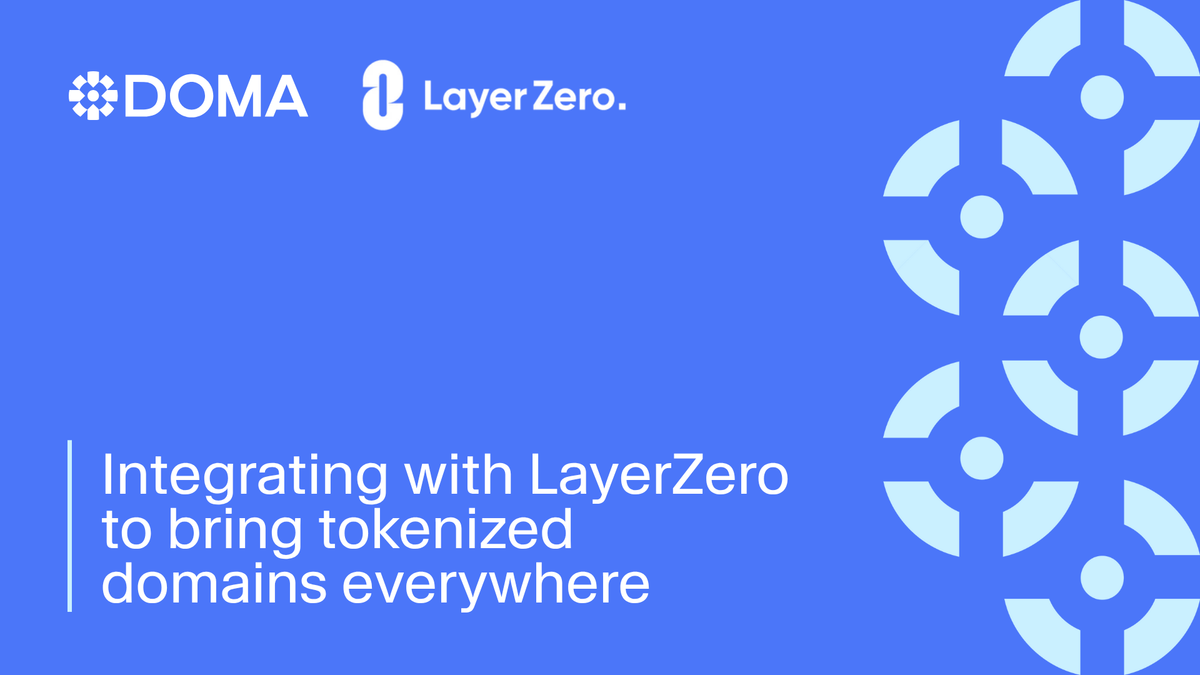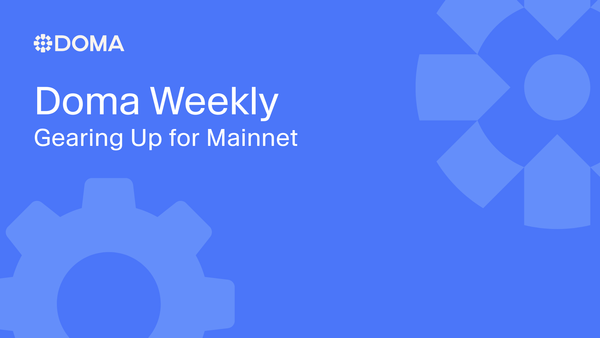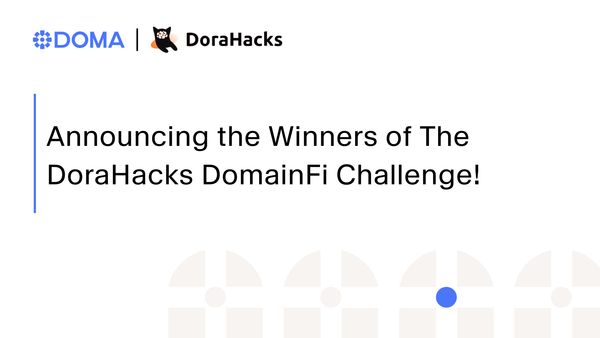Mainnet-Ready: Integrating with LayerZero to bring tokenized domains everywhere

By Inderpreet Singh (VP Product & Tech, D3)
As we count down to Doma’s mainnet launch, we’re continuing our conversations with the infrastructure partners helping us build the systems that will make trading hundreds of millions of DNS-compliant domains possible.
This week, we sat down with Kenny Zhang, Ecosystem Lead at LayerZero, to talk about how LayerZero’s omnichain messaging protocol powers Doma’s multi-chain liquidity stack, connecting domains, DeFi, and interoperability into one seamless experience. Our recording of the convo is live here too. Let's jump right into it:
Inder: One of the hardest problems we had to solve in designing Doma’s mainnet was interoperability, making sure a domain tokenized on one chain could trade and settle seamlessly on another. How does LayerZero make that possible?
Kenny: LayerZero is an omnichain interoperability protocol, essentially the communication fabric between blockchains. It lets contracts on one chain send verified messages to another, enabling truly native cross-chain actions instead of “wrapped” assets.
Today, LayerZero supports over 150 chains and recently added endpoints for Doma and D3, bringing DNS-compliant assets into the omnichain world.
Inder: Doma will be multichain from day one, domains exist on Base, Avalanche, and more. One of the biggest reasons we partnered with you is the OFT (Omnichain Fungible Token) standard. How does it fit in?
Kenny: The OFT standard is designed exactly for that. It allows Doma to deploy once, and the token can move and function natively across all supported chains. The key is that Doma retains full ownership of contracts on every chain, unlike traditional bridges where the bridge itself owns the asset contract.
Inder: Amazing. So, let's talk about the launch process. As you know, Doma is preparing to launch its mainnet with deep liquidity and seamless cross-chain settlement. How does LayerZero help new ecosystems avoid the “cold-start” problem?
Kenny: Good question. So, one of the biggest issues new chains face is bootstrapping liquidity on day one. Recently, LayerZero solved this using pre-deposit vaults during launches like Plasma, Unichain, and Berachain. We saw billions in assets deposited on Ethereum, Arbitrum, and other chains before mainnet even went live.
When the chain launched, those deposits appeared 1:1 on the new chain instantly, and in many cases, they were automatically deposited into AMMs and lending markets at genesis.
Inder: Security has always been our north star. How does LayerZero protect users moving assets cross-chain?
Kenny: Security is everything for us. We deploy immutable contracts, so no one, not even us, can change them after deployment. Then we use DVNs (Decentralized Verifier Networks) - independent parties like Google Cloud, Nethermind, and Polyhedra - that verify every cross-chain message.
Developers can choose their own DVN quorum for their specific risk profile. For example, you could require five or ten DVNs to sign off before a message is executed. That flexibility means Doma can define its own security model.
And on top of that, LayerZero runs the largest bug bounty in the space through ImmuneFi, rewarding prizes up to $15M.
Inder: Stablecoins are key to the domain economy, most domain trades are USD-denominated. You recently mentioned Hydra, which brings stablecoin liquidity to new ecosystems. How does that help Doma users?
Kenny: Hydra gives new ecosystems instant stablecoin liquidity without waiting for Circle or Tether to deploy. A user holding USDC on Ethereum or Avalanche can bridge straight into Hydra USDC on Doma, and it behaves exactly like native USDC from the start.
And the best part? When Circle eventually deploys on Doma, those Hydra tokens automatically become canonical USDC. No migration, no wrapping, no action required from the user.
For new ecosystems like Doma, this gives them immediate access to stable liquidity from day one.
Inder: One of our goals with Doma is a Web2-smooth experience, no one should have to worry about gas tokens or wrapped assets. How does LayerZero help improve that UX?
Kenny: Gas has been one of the biggest pain points for years. With LayerZero’s executors, we can automatically airdrop a small amount of destination-chain gas to users when they bridge.
So if someone bridges to Doma for the first time, they can instantly transact without hunting for gas tokens. It’s all handled behind the scenes, no friction, no Discord begging.
That’s the level of abstraction we think every user experience should have.
Inder: Looking ahead, where do you see the multi-chain experience going in the next few years?
Kenny: I think it all converges toward abstraction. Users won’t even realize they’re interacting across multiple chains, they’ll just be using apps that work.
Our goal is to make Doma’s cross-chain experience feel unified, with security and liquidity managed invisibly in the background.As the space evolves, I expect chains to become invisible layers beneath a single, seamless interface.
Inder: Couldn’t agree more. We recently launched Doma Forge to support builders creating DomainFi applications. How is LayerZero helping developers in this ecosystem?
Kenny: We’re fully aligned with that mission. We’ve built intuitive developer docs and SDKs, and our team is always accessible to help new builders, whether they’re deploying an OFT, integrating Stargate, or building a domain marketplace.
We’re developer-first, and that’s exactly how we plan to support Doma’s builders too.
Final Thoughts
Inder: For us, domains are the foundation of the internet. With LayerZero, we’re unlocking their next chapter, making them liquid, composable, and omnichain.
Kenny: Couldn’t agree more. This partnership is about bridging Web2’s most valuable digital asset, domains, with the full power of Web3 infrastructure. We’re just getting started.
To learn more about Doma, check out our docs here.
To try out Doma, check out the testnet here.





